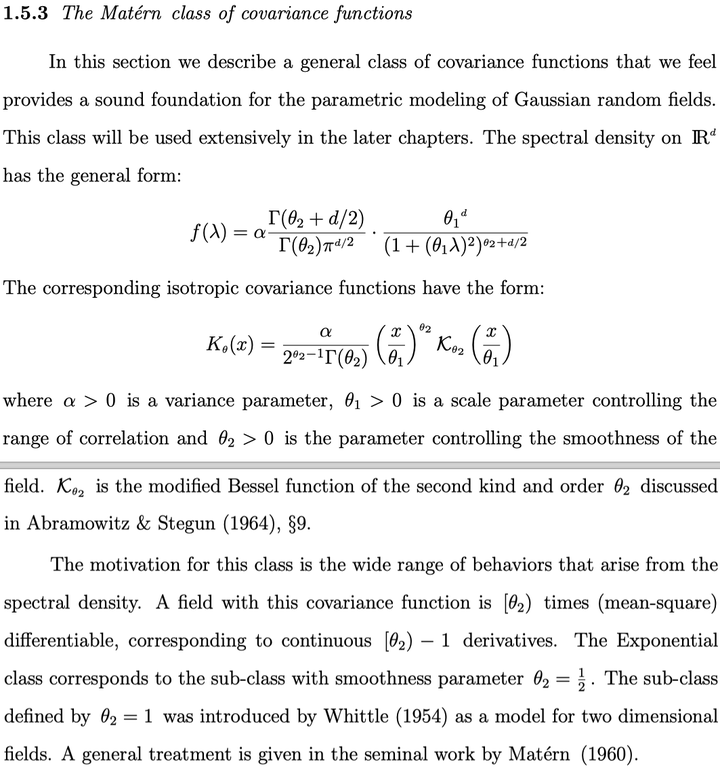Inference for spatial Gaussian random fields when the objective is prediction

Abstract
This thesis is concerned with aspects of statistical inference for Gaussian random fields when the ultimate objective is prediction. If we wish to predict a value for a random field at unobserved locations in a bounded region it is essential to have knowledge about the covariance function for that field. This knowledge is important both for the quality of prediction and for the assessment of the quality of prediction. The perspective taken in this thesis is that a predictor is incomplete without an associated measure of uncertainty. That is, obtaining a good estimate of the prediction variance is as much of a concern as obtaining a good prediction.
Stein (1988a) has shown that the impact on the best linear unbiased predictor from not using the correct covariance function is asymptotically negligible as the number of observations increases if the covariance function used is ‘compatible’, in a well defined sense, with the actual covariance function on the region of interest. The concept of compatibility thus plays a central role in determining how a covariance function should be estimated.
This thesis concentrates on likelihood based inference for the covariance function when the random field is known to be Gaussian and the mean function has known form. We find that the likelihood statistic tells us as much about the model chosen as the data we are analyzing. If we use a peculiar model the likelihood statistic will indicate this by exhibiting peculiar behavior. If we have difficulty accepting a peculiar likelihood, we should choose a different model. Choosing to ignore the likelihood and using an alternative estimation procedure for the same peculiar model will not make the peculiar behavior exhibited by the likelihoods go away. We address numerical issues that arise when an irregular likelihood is used for inference.
For spatial random fields observed on a fixed region, an increasing density asymptotic framework may lead to bounded information for some of the parameters. We investigate the approximation of discrete observation in a fixed interval by continuous observation on the same interval. We find that the distribution of the maximum likelihood estimates are well approximated by their continuous versions when the range of correlation is comparable to the length of the segment, in a sense made precise. In this setting the empirical covariance function fails as an effective estimator of procurable characteristics of the covariance function. We investigate the empirical spectral density and find that it also fails in a surprising manner.
We analyse the best linear unbiased prediction procedure from within a Bayesian framework. The objective is to monitor the performance of the procedure when the underlying model is misspecified. Particular attention is paid to the treatment of parameters in the covariance structure and their effect on the quality, both actual and perceived, of the prediction.
These ideas are implemented using topographical data from Davis (1973) as a forum.